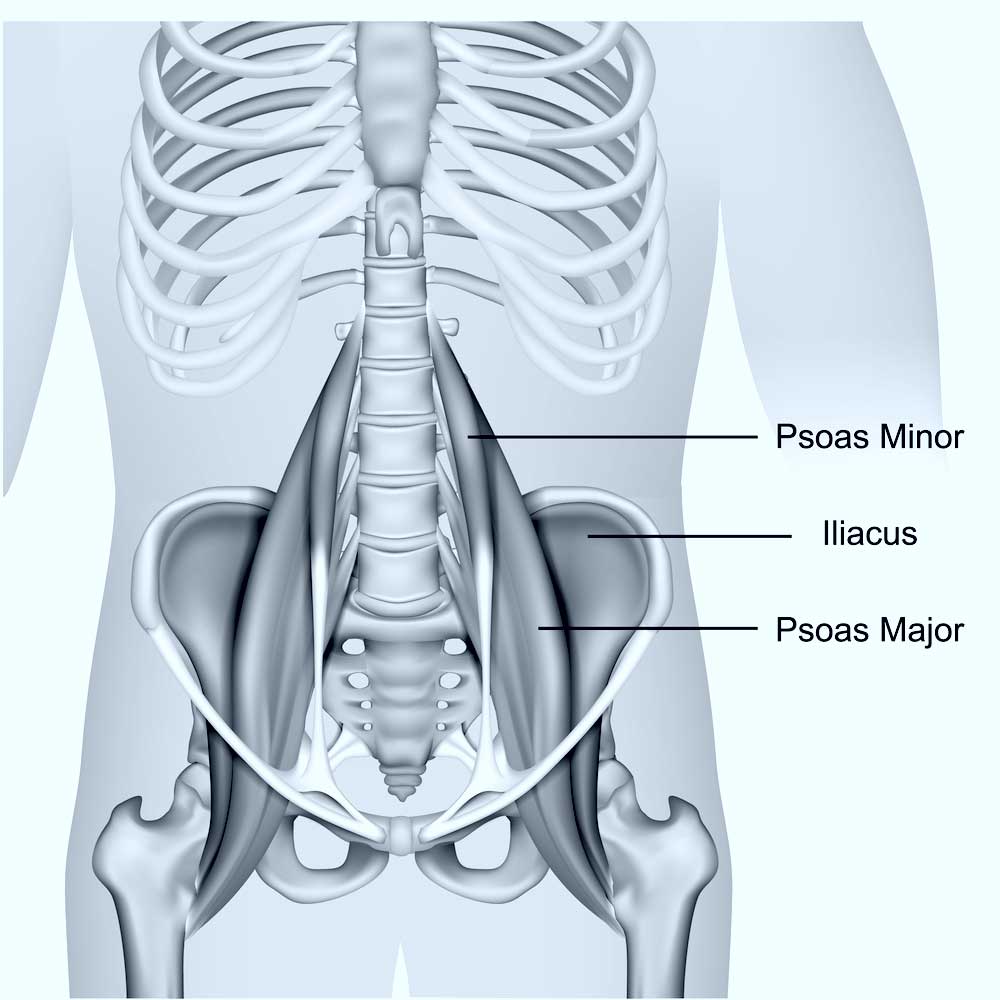Psoas Impingement Specialist

Athletes, such as gymnasts, dancers, and track and field athletes, who tend to over-use their iliopsoas tendon may develop tightness of the psoas muscle. This tightening or pinching of the muscle due to the abnormal motion of the hip, caused by the head of the femur, rubbing incorrectly against the socket of the hip can lead to psoas impingement. Orthopedic hip specialist, Doctor Benedict Nwachukwu provides diagnosis as well as surgical and nonsurgical treatment options for patients in Manhattan, New York City, NY who have developed psoas impingement. Contact Dr. Nwachukwu’s team today!
Psoas Impingement (Internal Snapping Hip Syndrome)
What is the psoas?
The psoas is one of the biggest and strongest muscles, located within a group of muscles, called the hip flexors. A deep-seated core muscle, the psoas connects the lumbar vertebrae (lower spine) to the femur (thigh bone). This grouping of hip flexors contracts to pull the thigh and the torso toward each other. The psoas affects posture and helps stabilize the spine. If it is out of balance, it can contribute to pelvic and low back pain.
What is the Iliopsoas?
The psoas muscle originates from the spinal vertebra and courses down toward the pelvis and joins with another muscle called the iliacus which originates from the inner bowl of the pelvis (or ilium). These muscles join together and travel downward, attaching to the femur. The two muscles work together and are usually referred to as one muscle; the iliopsoas. The tendon attached to the bone is called the iliopsoas tendon.

What is psoas impingement?
Abnormal motion of the hip, caused by the head of the femur, rubbing incorrectly against the socket of the hip can cause a painful condition called FAI or Femoroacetabular Impingement. This abnormal movement can also cause a tightening or pinching of the psoas muscle, and soft tissues called psoas impingement. Psoas impingement may occur in the setting of underlying FAI, or in isolation. The tightening of the iliopsoas tendon and psoas muscle can cause a condition called snapping hip syndrome or psoas impingement. It becomes symptomatic when the tendon gets snapped over the bone and soft tissues of the hip joint. Dr. Benedict Nwachukwu, orthopedic hip specialist, helps patients in Manhattan, New York City and the surrounding New York boroughs who are experiencing the painful symptoms of psoas impingement.
Who is at risk for psoas impingement?
Athletes who tend to overuse their iliopsoas tendon may develop tightness of the psoas muscle. This includes gymnasts, dancers and athletes who participate in track and field where the hip flexor muscles are used repeatedly. This may be prevented by a tailored stretching program in athletes, but certain patients may still be predisposed to the condition secondary to underlying abnormalities of the hip. Hip flexors can also become short and tight if excessive time is spent sitting or if the muscles are repeatedly worked in activities like sit-ups, bicycling and certain weight training exercises.
An impinged psoas muscle can cause serious problems with posture and is often a cause of lordosis (overarching of the lumbar spine). This can be a common cause of low back pain and stiffness. Psoas impingement can also contribute to arthritis in the lumbar joints. An overstretched psoas muscle can create a different postural problem, where the pelvis is pushed forward, beyond the chest and knees. The misalignment causes tight hamstrings and a flattened lumbar spine. This can cause a weak low back which is at risk for injury, especially at the intervertebral discs.
What are the symptoms of psoas impingement?
The primary symptoms of psoas impingement are hip pain and soreness deep in the groin. The patient may report symptoms of tightness in the hip or pain with activities requiring flexion and extension. A snapping sensation in the front part of the hip may also be present in certain patients.
How is psoas impingement diagnosed?
Dr. Nwachukwu will evaluate the patient’s hip to determine a diagnosis. This consists of a specific physical examination with tests to assess the status of the psoas muscle and tendon. Strength and flexibility will also be tested. In almost all cases, Dr. Nwachukwu will use imaging to evaluate the joint. X-rays provide the opportunity to look at the bone itself, while an MRI (magnetic resonance imaging) is used to examine the soft tissues and cartilage within and around the hip.
What is the treatment for psoas impingement?
Non-Surgical Treatment:
Hip impingement and tightness involving the iliopsoas tendon can be treated conservatively in most cases, with rest, anti-inflammatory medication and a tailored stretching program. Once the joint has been rested and the psoas muscle is stretched, the inflammation and psoas pain often subside. Dr. Nwachukwu will usually recommend gradual strengthening of the muscle to prevent re-injury. In certain patients, an injection of steroids and local anesthetic may be utilized to help decrease the inflammation of the tendon, reduce pain and allow for greater participation in therapy.
Surgical Treatment:
In select cases, depending on the severity of the condition and if conservative measures fail, surgery may be needed to address the tendon or associated underlying abnormality. For patients who require surgery, Dr. Nwachukwu will use an arthroscopic surgical approach. This involves examining the hip through the use of a small camera (arthroscope) and evaluating the psoas tendon under direct visualization. If the tendon is found to be tight or diseased, Dr. Nwachukwu will perform a fractional lengthening of the tendon using small instruments. This serves to make the tendon longer and relieve the symptoms associated with the tightness while preserving hip flexion strength and power of the muscle itself. At the time of surgery, any other hip pathology, such as FAI, will also be addressed through the same incisions.
What is the recovery time after psoas impingement surgery?
Dr. Nwachukwu will provide a well-supervised physical therapy program beginning with therapy immediately following arthroscopic hip surgery. It is essential movement and mobility begin slowly, but immediately after surgery, so a normal range of motion can be achieved over time. Therapy will initially focus on maintaining the length of the tendon so tightness will not recur and then progress to strengthening. It is very important that patients follow the protocol for post-op recovery as set forth by Dr. Nwachukwu and his team.
For more information on psoas impingement, lower back pain or hip pain, please contact the office of Benedict Nwachukwu, MD, orthopedic hip specialist serving Manhattan, New York City and surrounding New York boroughs.
Location
610 W 58th Street
New York, NY 10019
148 39th Street, 7th Floor
Brooklyn, NY 11232
Fax: 646-885-8252
Office Hours
HSS Sports Medicine Institute West Side
Monday: 8:00 am – 5:00 pm
Tuesday: 8:00 am – 5:00 pm
Wednesday: 8:00 am – 5:00 pm
Thursday: 8:00 am – 5:00 pm
HSS Brooklyn
Friday: 8:00 am – 5:00 pm
